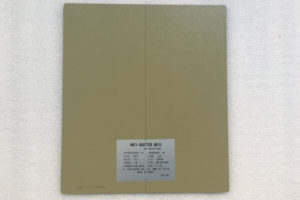There are many options for anti-scatter grids in diagnostic radiology, how to choose the appropriate grids of various specifications, let us follow the editor to understand.
Grid: Used to filter out the scattered rays produced by the human body during photography.
The appearance is a thin plate with a thickness of 3~5mm. Generally, a lead strip with a thickness of 0.05-0.1mm is used, and it is clamped between aluminum or paper with a thickness of 0.15-0.35mm. The filler can be wood, paper, aluminum sheet, etc. The height of the lead bar is the thickness of the grid plate. Finally, the upper and lower sides are packaged with thin aluminum plates. Its specifications are:
(1) Focal length (f): The extension lines of each lead strip will converge to one point. The vertical distance from this point to the grid is the focal length (radius) of the grid. A straight line is drawn in the center to indicate the direction of the lead strip, which is the focal plane.
(2) (grid density N): The number of lead bars contained in the grid plate per centimeter defines its grid density. The grid grid density generally used is 40~65 lines/cm.
(3) Grid ratio (R): refers to the ratio of the height of the grid plate lead strip to the gap between the grid bars. The higher the ratio, the stronger its ability to filter out scattered rays. Generally used grids have a grid ratio between 8:1 and 14:1. the
Classified according to the structural characteristics of the grid: focus type, parallel type, cross type.
There are four situations in which the gate cutting effect occurs:
The focus grid is used in reverse: the photo shows a higher density in the midline and a gradual decrease in density on both sides.
Tendency to tilt: ①The center line is perpendicular to the grid plate, but deviates from the grid plate center line to one side; ②The center line is not perpendicular to the grid plane, and the density on both sides of the photo is inconsistent.
The focal length of the upper and lower offset grids: the density in the center line is higher, and the density on both sides gradually decreases.
Double deviation: one side is higher and the other is lower in photo density.
Precautions for using the grid:
① Prohibition of inversion
② The center line is aligned with the center of the grid, and the left and right deviation does not exceed 3cm;
③ Tilt the X-ray tube to be parallel to the direction in which the lead strips are arranged;
④ Use within the permitted range.
Selection of the grid: When the application requires a high rate of elimination of scattered rays, use a grid with a large grid ratio; when X-rays are slanted, you cannot use a crossed grid.
1. The commonly used grid ratio for high kilovolt photography is 12:1.
2. During grid photography, the exposure conditions should be appropriately increased.
3. The grid should be placed between the human body and the film cassette, with the focusing plane facing the incident direction of X-rays.
4. In the principle of use, the thickness of the object to be illuminated should exceed 15cm and greater than 60kv.
5. Upright chest X-ray requires a grid focal length of 180cm and a grid ratio of 12:1 or 14:1.
6. The change of the focal length f of the grid during photography should not be greater than or less than 25% of the focal length.
7. For movable grids, the movement time of the grids should be at least longer than 1/5 of the exposure time.
8. The photography condition is 80kV, and the grid ratio is 8:1. (100kV is 10:1; 120kV is 12:1)
9. Mammographygrids are usually 80LP/cm ultra-dense textured grids or high-pass porous grids (honeycomb).
We Weifang Newheek Electronic Technology Co., Ltd. is an import and export trading company that produces X-ray machines and accessories. We can customize grids. Welcome to consult. Tel (whatsapp): +8617616362243!

Author:X Ray Grids Maker
Tel: +86 18953679166
Email: service@newheek.com
Company: Weifang Newheek Electronic Tech Co., Ltd.
Address: E Building of Future Star Scientific Innovation Industrial Zone of No.957 Wolong East Street, Yulong Community, Xincheng Sub-District Office, Weifang Hi-tech Zone, Shandong Province, China